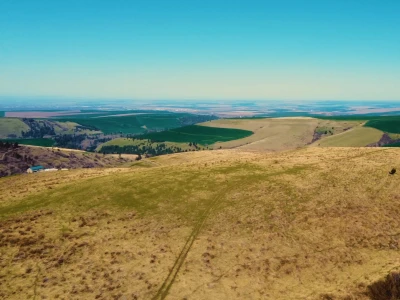The Pacific Northwest (PNW) includes the incredibly productive and diverse agricultural regions of Washington and Oregon. Washington leads with roughly $13 billion in annual agricultural production with over two thirds of that represented by crop production. Apples represented about 16% of the state’s total value of agricultural production (slightly down from its historic share) and account for more than 70% of the total U.S. production. Milk production ranks second with wheat, cattle and potatoes rounding out the top five. Washington is also the top U.S. producer of blueberries, hops, pears, and sweet cherries, and it is the number two U.S. producer of apricots, asparagus, grapes, potatoes, and raspberries. In total, over 300 agricultural products are commercially grown in Washington, and the flexibility to shift production based on evolving demands is a key differentiating feature for the region.
Oregon’s total annual value of agricultural production is about half that of Washington’s, but also produces an incredibly diverse set of more than 220 crops over 16 million acres of production. Oregon is viewed as a progressive state with a family-farm centric ethos, and higher than average share of women in ownership or leadership positions.
The top commodities produced in the state are hay, milk, wheat, potatoes, wine grapes, berries, hazelnuts, and pears. It is noted for its major wine grape and berry production regions and has very strong dairy sector as well.
It is worth noting that Idaho, in a neighboring production region, directly competes with eastern Washington and Oregon. Idaho and Washington together form the top potato production region in the U.S., growing approximately with Idaho accounting for about $1.5 billion and Washington accounting for just under $1 billion in annual sales. In addition to potatoes, Idaho ranks first in the nation for production of barley, and alfalfa hay. The state is also the second largest grower in the U.S. of sugar beets and hops, and Idaho is the third largest producer of cheese and milk.
Key features of the PNW region include massive water resources and a highly developed water rights system. Some slight drought concerns remain for northwest portions of Washington and sub areas of the Willamette Valley, but have substantially abated relative to the previous year. And, while some portions of the Pacific Northwest do face specific water supply constraints, producers with access to the Columbia River water system and historic permitted wells hold a major advantage relative to those in other parts of the country. Enforcement and allocation issues are always in the news, but approximately 8 million acres are irrigated with water from the Columbia River representing only about 6% of the Columbia River Basin’s yearly runoff. Hydropower from dams in the region results in the area also having clean energy sources that rank among the most affordable in the United States. Low-cost energy for irrigation results in a substantial cost advantage compared to some part of California for example, where electricity costs can be roughly 10 times as expensive per kwh. The irrigation infrastructure in the region is highly developed, and water rights are correspondingly highly influential in determining best uses, and production locations for major crops.
Headwinds for the region are reasonably light but include continued labor issues and the need to manage production and harvesting costs under emerging laws related to overtime and temporary worker treatment. Wine grape production in the region is also strong but consolidating and reorganizing with stories related to loss of access to historic marketing channels, and the need for more scale increasingly of note. The large recent sale of the Chateau St. Michelle in 2021 has continued to create ripples in the industry as production systems supporting the industry adjusted. Land transaction volumes have slowed dramatically, but the longer-term turnover patterns tend to revert through time with indications of a bit of a “back-log” for land sales. High demand remains and sales prices have also remained reasonably strong.
Turning to the financial performance of agriculture in the region, the Pacific Northwest has been among the strongest performing regions, despite some recent issues with apple prices, and export market access for other crops. The pattern for land appreciation in the region has been notably smoother than in other production regions, and both small and large-scale investment opportunities exist with a mixture of institutional scale and family farm sized operations. Over both the most recent three-year cycle, and over the long term since 1991, gross returns have average around 12% per year, representing an exceptionally attractive investment with low annual income risk and reasonably stable appreciation. Those features of the returns pattern make the region particularly attractive for long duration investors in particular.
SUMMARY
The Pacific Northwest remains in an attractive position to continue to absorb displaced production from other areas due to its flexibility in productive capacity, low energy and water resource costs, proximity to West Coast consumers, and increasing reputation as a supplier of vegetable crops, specialty crops, wine grapes, along with dominantly established hay, wheat, potatoes, dairy, apples, and seed production industries. These historic performance of the region and the versatility to respond to changing demand conditions suggest that the future will remain among the top performing regions into the future.
ALL REGIONS




